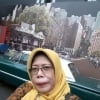Publikasi Fakultas Ilmu Pendidikan
| | | | | | | | | | | | | | | | | | | | | | | | | |
| Year | Title | Description | Publisher | Author(s) |
|---|---|---|---|---|
| 2018 | Practicality Learning Social Science using Teaching Material E-Book 3D Page Flip for Grade IV Elementary School | This article aims to develop learning materials eBook 3D Page Flip as well as provides additional references to the use of learning materials to teachers and students. The learning process in the classroom using conventional materials causing the students are less active in the learning process. Elementary school age children are in the process of development of oprasional concrete as well as students need rendering are iconic. Research methods development research using model 4 d (Four D Model) with a design class (one group pretest-posttest). The sample in this research totalled 38 grade IV elementary school. The study did three times by measuring learning implementation learning and activities students are rated by two observer. The results of this research in the form of e-learning materials 3D Page Flip eBook exceptionally well used to grade IV elementary school students in the learning process. |
The 2nd International Conference On Child-Friendly Education (ICCE) 2018, 2018 | |
| 2018 | Students Motivation and Achievement Whose Parents Work as Indonesian Migrant Workers | This study was conducted to describe motivation and achievement of elementary school students whose parents work as Indonesian migrant worker. This is qualitative research in the form of case study. This method requires in-depth situation. The respondents were 24 students. Data were analyzed by process of collecting data, reducting data, presenting data, and giving conclusions. The findings of this research showed that students in elementary school have low motivation to learn. In fact, their learning achievement still can't reach the standard of mastery learning. |
1st International Conference on Education Innovation (ICEI 2017), 199-202, 2018 | |
| 2018 | Optimization of Slice Thickness, Drying Method, and Temperature of Turmeric Rhizome (Curcuma Longa L.) Based on Water Content and Functional Compound Degradation | The research of oven-based drying technology on the production process of turmeric rhizome (Curcuma Longa L.) with thickness 0.15 and 0.30 cm have been. A number of parameters, such as slicing thickness, drying methods and temperatures are optimized, to achieve water and functional compounds (essential oils, curcuminoids, curcumin, demethoxycurcumin, bis-demethoxycurcumin and polysaccharides) content that meet the standards. The results of applying oven-based drying technology to turmeric and white turmeric were investigated at four temperatures (70, 85, 100, 115 ºC) and compared with conventional drying using sunlight (with and without black cloth). Low water content of turmeric and white turmeric was observed on drying results using an oven with a temperature of 115 ºC, but with a higher degree of functional compound degradation compared with conventional drying results, with and without black fabric intermediates. Based on water content, the optimum drying results are obtained from oven-based drying with a temperature of 115 ºC and a slice thickness of 0.15 cm. The evaluation results of the functional compound levels using HPLC under optimum conditions showed significant differences between conventional and oven-based drying results. Although the essential oil content of turmeric and white turmeric simplicia in this study is still above that required by Materia Med Indonesia, which is 1.5%, but of all the drying methods tested, oven-based drying is capable of producing the simplified product with the most close to oil content 1.5% compared with conventional drying. Thus, oven technology can be used as an … |
International Conference on Science and Technology (ICST 2018), 46-52, 2018 | |
| 2018 | Student Worksheet Based on Mind Mapping to Increase Activities and Learning Outcomes | The purpose of this research is to develop student worksheet product based on cooperative model of mind mapping. The student worksheet is tested to find out its effectiveness in improving the activity and students’ learning outcomes. student worksheet is developed based on the steps of cooperative model of mind mapping type that begins with the conveyor of competence, raising the problem, forming the group, reading out of the discussion, and ended by making the conclusion by the students. This research type is R&D research (Research and Development) with 4D model that includes define, design, develop, disseminate. The research design used is Quasi experimental with nonequivalent control group design. Instrument validation sheet, observation, test and questionnaire were used in the data collection. The result of the research shows that student worksheet developed by the cooperative model of mind mapping can increase activity and result of students’ learning outcome of the fourth grader of elementary school. |
2nd International Conference on Education Innovation (ICEI 2018), 244-247, 2018 | |
| 2018 | Analysis of Contaminant and Nutritional Content of Red Galangal (Alpinia purpurata K. Schaum) Simplicia | This study has been conducted analysis of contaminant and nutritional content of red galangal (Alpinia purpurata K. Schaum) simplicia. Simplicias as one of post-harvest processed form. Simplicia is a material to produce herbs medicine. So that, simplicia quality must be considered. The quality of simplicias depends on two parameters that are contaminant and nutritional content. Contaminants can reduce product quality, so it must be controlled. As well as contaminant, nutritional content also must control, because it is affected quality of simplicia product. Nutritional content that must be controlled are essential oil, monoterpene on essential oil, oleoresin, saponin, tannin, and flavonoid. Simplicia is produced by, washing, slicing and drying methods. Whereas contaminants contained in simplicia are lead, copper, arsenic, total plate number, E. Coly, mold, and aflatoxin. From this study, produced red galangal simplicia with nutritional content, 1.98% essential oil, 37.92% monoterpene on essential oil, 1.34% oleoresin, 0.74% saponin, 0.21% tannin, and 0.12% flavonoid. While, contamination on simplicia product includes 1.13 mg/Kg lead, 1.21 mg/Kg copper, 0.05 mg/Kg arsenic, 1.93 x104 colony/g total plate number,< 10 apna/g E. Coli,< 10 colony/g mold, and 2.76 mg/Kg aflatoxin. From the result of this study, that are contaminants and nutritional content, the simplicia product has conformed to the standard of drug quality according to SNI. |
International Conference on Science and Technology (ICST 2018), 205-208, 2018 | |
| 2018 | Influence of CTL Approach To Improve Critical Thinking Skills and Social Study Learning Outcomes In Primary Schools | The research aims to examine the effects of the application of contextual teaching and learning (CTL) approach to increase critical thinking skills and student learning outcomes in primary school. This research used Quasi-Experimental Research using nonequivalent group design. The data were obtained from several instruments, ie a test of social studies learning outcomes in form of multiple choice as many as 20 questions and critical thinking study question in a form of essay as many as 6 questions. The data was analyzed by using t-test. The results showed:(1) learning result of social studies using CTL learning approach is higher than that of social studies using conventional learning approach with average score of CTL approach 82.00, and the average conventional approach 72.50 (2) the result of social studies with high critical thinking score is 80.00 and low critical thinking score is 70.67. Based on the data analysis it can be concluded that the CTL approach can increase critical thinking skills. |
2nd International Conference on Education Innovation (ICEI 2018), 240-243, 2018 | |
| 2018 | Improving the Ability to Classify Animals Based on the Type of Food in Science Studies with STAD Cooperative Method | The purpose of this study was to improve the ability to classify animals based on the type of food in science subjects through the Cooperative Student Teams Achievement Division (STAD) method of fourth grade students at Kedungrejo Elementary School. This research was conducted through several stages, namely: 1) Planning Phase, 2) Implementation Phase, 3) Observation Phase (Observation), and 4) Reflection. The implementation of this learning improvement resulted in an increase in student learning outcomes, which initially had a very low level of student understanding reaching only 32.3%. Then Classroom Action Research was carried out in the class starting from cycle I with an increase in the percentage of students who achieved the score to 64.5%. However, the achievement was considered unsatisfying, thus, cycle II was conducted. After improvements in the second cycle, the percentage of students achieving the score reached 90.3%. This percentage is considered sufficient to represent the completeness of student learning. In addition to the significant improvement in abilities, it turns out that the activeness of students in the learning process with this STAD Cooperative method also increases. |
2nd International Conference on Education Innovation (ICEI 2018), 600-603, 2018 | |
| 2018 | The Guided Inquiry Worksheet: Growing with Scientist in Indonesia Middle School | The purpose of this is to develop and validate a guided inquiry worksheet to improve science process skills and understanding concepts at Indonesia middle school. Our project is based on concrete activities on material temperature and heat linked to the daily life. Actually, the worksheets learning have not been optimally students to abilities in questions, searching, understanding, finalizing answers' what','why', and'how'a phenomenona by occurring natural through systematic and benefitting in daily activity. In this context, reform that students involved in exploring and understanding how scientists build, evaluate, and apply scientific knowledge in a scientific inquiry context using open-ended questions and experiences in their own |
1st International Conference on Intellectuals' Global Responsibility (ICIGR …, 2018 | |
| 2018 | Pengembangan MediaModul Materi Pokok Simulasi Visual Mata Pelajaran Simulasi Digital Untuk Siswa Kelas X Akuntansi dan Keuangan Lembaga (AKL) 1 di SMKN 1 Bangkalan | Penelitian ini bertujuan mengetahui kelayakan dan keefektifan media modul yang dikembangkan pada peserta didik kelas X Akuntansi dan Keuangan Lembaga SMKN 1 Bangkalan. Media modul dikemas dalam bentuk cetak dengan ukuran A5 didalamnya memuat tujuan pembelajaran, materi yang luwes, rangkuman materi, bahkan soal-soal evaluasi disetiap kegiatan belajar, sehingga siswa dapat lebih aktif belajar. Subyek penelitian ini adalah siswa kelas X Akuntansi dan Keuangan Lembaga di SMKN 1 Bangkalan. Model pengembangan yang digunakan adalah model pengembangan R&D. Metode pengumpulan data menggunakan wawancara terstruktur, angket, dan tes. Teknik analisis data menggunakan rumus uji t. Pada uji validitas item soal dinyatakan valid sedangkan uji reliabilitas dinyatakan reliabel. Data yang dianalisis bersifat homogen dan berdistribusi normal. |
Skripsi S1. Surabaya: Program Studi Teknologi Pendidikan, FIP UNESA, 2018 | |
| 2018 | The Prouction and Characterization of Kaempferia Galanga L.–Based Herb Powder: Blanching and Drying Procedure Influence on Proximate, Metal, and Microbial Contamination | This research was conducted to obtain the procedure for the production of herb powder based on Indonesian local Kaempferia galanga commodities which have proximate as well as metals and microbes contamination level that meet the requirements in the Indonesian National Standard (SNI) 01-3709-1995. Blanching and drying procedures are two things optimized in the production process of Kaempferia galanga powder in this study. The results show that the blanching procedure at a temperature of 80 C has induced an increase in water content even though it is still below the SNI threshold. However, the application of drying procedures accompanied by increasingly intensive raw material reversal treatment has compensated for the increase in water content. Along with these conditions, there has been a decrease in ash as well as acid insoluble ash content of the resulting Kaempferia galanga herb products. This condition was strengthened by the results of the metal and microbes contamination levels analysis which showed a significant decrease, especially in the levels of copper metal contamination (25%), total plate number (9.56%) and aflatoxin (66.67%) of the Kaempferia galanga herbs powder products are produced by involving blanching stages accompanied by 2 times/hour reversal treatment |
Seminar Nasional Kimia-National Seminar on Chemistry (SNK 2018), 56-60, 2018 |

